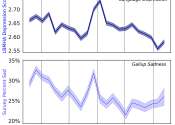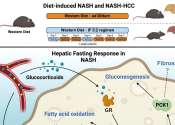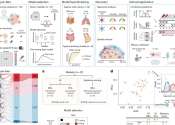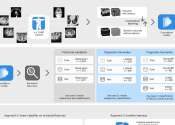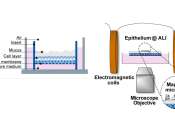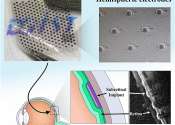Last update:
Neuroscience
Visual experiences unique to early infancy provide building blocks of human vision, study finds
What do infants see? What do they look at? The answers to these questions are very different for the youngest babies than they are for older infants, children and adults. Characterized by a few high-contrast edges in simple ...
31 minutes ago
0
0
Medical research news
Research team introduces new tool to boost battle against childhood undernutrition
A new tool developed at the University of Virginia School of Medicine is expected to help doctors and scientists better understand and overcome childhood undernutrition that contributes to almost half of all deaths of children ...
1 hour ago
0
0

How herpes hijacks a ride into cells
Northwestern Medicine scientists have discovered how herpes viruses hijack cellular transport processes to infiltrate the nervous system, as described in a study published in the Proceedings of the National Academy of Sciences.
2 hours ago
0
17
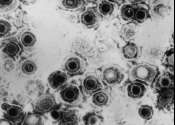
How the brain is flexible enough for a complex world, without being thrown into chaos
Every day our brains strive to optimize a tradeoff: With lots of things happening around us even as we also harbor many internal drives and memories, somehow our thoughts must be flexible yet focused enough to guide everything ...
2 hours ago
0
3
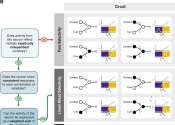
Study reveals need to review temperature control measures in hospitals to manage Legionella
New work has disclosed significant findings on the survival of the Legionella pneumophila bacterium in hospital water systems. Recently published in the journal Science of The Total Environment, the study suggests adjustments ...
2 hours ago
0
1
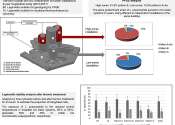
'What was that?' How brains convert sounds to actions
You hear a phone ring or a dog bark. Is it yours or someone else's? You hear footsteps in the night—is it your child, or an intruder? Friend or foe? The decision you make will determine what action you take next. Researchers ...
3 hours ago
0
2
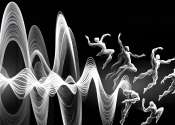
ERR-gamma 'trains' stomach stem cells to become acid-producing cells
Common conditions such as indigestion and heartburn as well as peptic ulcers, autoimmune gastritis and stomach and esophageal cancers have one thing in common—they involve disruptions of the normal activity of parietal ...
3 hours ago
0
2

New research traces the spread of HIV in and from Indonesia
The HIV variant dominant in Indonesia was introduced from Thailand over multiple events. A Kobe University study traces where it came from and how it spread from there, offering possible insights into the development of treatments ...
9 hours ago
1
16
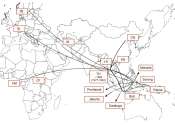
Researchers create AI model to understand how brain activity relates to illness
A team of researchers at Baylor College of Medicine and Yale University incorporated generative artificial intelligence (AI) to create a foundational model for brain activity. The Brain Language Model (BrainLM) was developed ...
2 hours ago
0
0

Metabolism of autism reveals developmental origins
Researchers at the University of California San Diego School of Medicine have shed new light on the changes in metabolism that occur between birth and the presentation of autism spectrum disorder (ASD) later in childhood. ...
9 hours ago
0
39

Autism's missing microbes may influence social behavior by protecting the gut
For people with autism, constipation, diarrhea, and abdominal pain often go along with the social struggles and repetitive behaviors that define the condition. This has prompted many to wonder whether gastrointestinal (GI) ...
4 hours ago
0
26
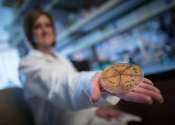
Psychological therapy shows promise in improving quality of life for people living with motor neuron disease
The largest-ever trial of a psychological intervention for patients with motor neuron disease (MND), conducted by researchers at the University of Sheffield and UCL, found that acceptance and commitment therapy (ACT) improves ...
4 hours ago
0
2

Unobtrusive, implantable device could deepen our understanding of behavioral responses
Much of what we know about neurological and psychiatric disorders in humans can be traced back to foundational studies of how animals, such as mice, learn and adapt to various situations. Studying behavioral responses has ...
4 hours ago
0
5
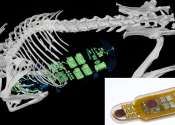
Using MRI, engineers have found a way to detect light deep in the brain
Scientists often label cells with proteins that glow, allowing them to track the growth of a tumor, or measure changes in gene expression that occur as cells differentiate.
4 hours ago
0
25
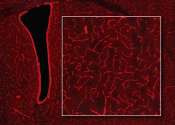
Analysis reveals new insights into global surge of Strep A infections
Strep A (Group A Streptococcus) is a common type of bacteria that typically causes throat infections and scarlet fever. While most infections are mild, in rare cases Strep A can cause invasive infections that can be fatal.
4 hours ago
0
3
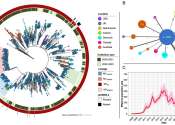
Flicker stimulation shines in clinical trial for epilepsy
Biomedical engineer Annabelle Singer has spent the past decade developing a noninvasive therapy for Alzheimer's disease that uses flickering lights and rhythmic tones to modulate brain waves. Now she has discovered that the ...
5 hours ago
0
15
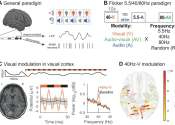
Scientists make progress on new charged particle therapy for cancer
ANSTO researchers have made significant progress on a new approach to cancer treatment Neutron Capture Enhanced Particle Therapy (NCEPT), which has the potential to improve outcomes for patients with deeply situated, diffuse ...
4 hours ago
0
0

Study shows how night shift work can raise risk of diabetes, obesity
Just a few days on a night shift schedule throws off protein rhythms related to blood glucose regulation, energy metabolism and inflammation, processes that can influence the development of chronic metabolic conditions.
22 hours ago
0
40

Navy Growler jet noise over Washington state's Whidbey Island could impact 74,000 people's health
Bob Wilbur thought he'd found a retirement home that would be a place of peace. Nestled against Admiralty Bay on the western edge of Whidbey Island, the three-story house is surrounded by trees and shoreline. It offers the ...
23 hours ago
1
38


























